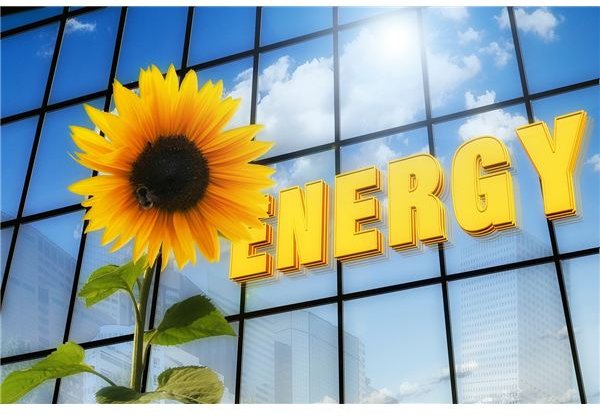What Is Flow Battery Technology? Is It Organic, Sustainable and Realistic?
Although the chemicals and metals may vary, essentially all the batteries we use everyday operate the same way. They contain a positive electrode (cathode) and a negative one (anode). Between the cathode and anode is an electrolyte. During a chemical reaction that occurs between the anode and the electrolyte, electrons are released. The cathode absorbs the electrons. The reaction produces an electric charge. The process continues until one or both electrodes have become depleted.
Many household batteries (AAA, D, etc.) have an anode made of zinc, a cathode of manganese dioxide and an electrolyte of ammonium chloride. Car batteries are usually made with electrodes of lead dioxide and metallic lead with sulfuric acid as the electrolyte.
What Makes a Flow Battery Different?
In a flow battery, a positively charged liquid (catholyte) and a negative one (anolyte) are stored in separate tanks. The fluids are pumped into the battery on opposite sides of a membrane, producing an electric current.
Once the fluids become depleted, they can be drained and replaced as easily as adding gas to a car. Recharging the battery is as simple as refilling both tanks. This rapid recharge rate makes them useful for electric cars. For other applications, the life of the battery is dependent on the size of the electrolyte tanks. A large system can produce electricity for a long time without maintenance.
History of the Flow Battery
French scientist Charles Renard invented the flow battery in 1884. He used a 435-kilogram zinc/chlorine unit to power the electric motor onboard the airship La France. It completed an eight-kilometer loop in 23 minutes. It was the first round trip by air ever.
The technology remained mostly dormant until NASA picked it up again in 1973. They developed a reduction/oxiditation (redox) battery using iron and chromium. It was to be used to store solar energy on a possible moon base.
Early flow batteries had limitations that kept them from becoming popular. The components were typically hazardous chemicals such as uranium, zinc bromine and polysulfide bromide. Cross contamination across the membrane eventually polluted both electrolytes, creating an unusable third solution. The chemical reactions often had to take place at high pressure and temperature.
The vanadium redox battery solves the cross contamination problem by using the same vanadium-sulfuric acid solution on both sides. The vanadium ions in each are either positively or negatively charged. Mixing of the two fluids is no longer an issue. Used electrolyte liquid can be recharged and reused. Furthermore, vanadium is a relatively cheap material commonly used in steel production.
nanoFLOWCELL
The flow battery jumped back onto the scene at the 2014 Geneva Auto Show. Liechtenstein-based nanoFLOWCELL unveiled the prototype QUANT e-Sportlimousine. The gull-winged zero-emissions sedan claims a 0-60 time of 2.8 seconds, a top speed of 230 miles per hour and a range of 300 miles. Simply put, the car runs on saltwater.
To put it more technically, a secret mix of lithium, sulfur, powers their flow battery and other metallic salts arranged in a network of nanoparticles and dissolved in water. One tank is positively charged and the other negatively. The proprietary ionic fluid is non-toxic and non-flammable. It can be recharged and pumped back into the car.
The swooping, voluptuous saltwater speedster captured attention with looks that were part Ferrari, part Tesla and part out-of-this-world. The interior includes a broad LED dashboard display and wrap-around wood veneer with integrated touch controls. If ever put into production, the car would likely sell for over a million dollars.
Fueling infrastructure is the number one problem for the e-Sportlimousine. Whatever magic liquid it runs on needs to be sold somewhere and at a reasonable price. To be practical, ionic fluid stations would need to sprout across the globe. The car and the company presenting it looked like a dream that may never become real.
Then nanoFLOWCELL made a pair of announcements in February of 2015. First, it hinted about an upgraded QUANT f-Sportlimousine that is closer to production than the e-model. Next, it revealed its little brother, the QUANTiNO. This prototype would be smaller, less powerful and more affordable.
Finding fuel is still a major issue, but nanoFLOWCELL looks more legitimate with three models instead of only one. Perhaps flow batteries could be a real solution to range anxiety in electric cars.
The Future
Meanwhile in the United States, General Electric and the Lawrence Berkeley National Laboratory are working together on water-based flow batteries for electric vehicle use. Using organic compounds, they aspire to create a catholyte/anolyte combination that is both powerful and clean. They believe they can triple EV range at a quarter the cost. Within a few years, they plan to create a system that can power a small car.
This technology can also be used to create and store power on a larger scale. King Island, located between Australia and Tasmania, stores power generated by solar and wind with a vanadium redox battery. When the wind is not blowing and the sun is not shining, the VRB can power the island independently.
Similarly, redox batteries can be used in other remote locations where a power grid is unavailable. They can be used also for residential storage, AC/DC conversion and city power grid supplementation.
If flow battery technology can be made clean and affordable, it may change the way power is created and stored. Recyclable electrolyte fluids could be a zero-emissions replacement for fossil fuels. They may even put saltwater super-cars in every garage.
